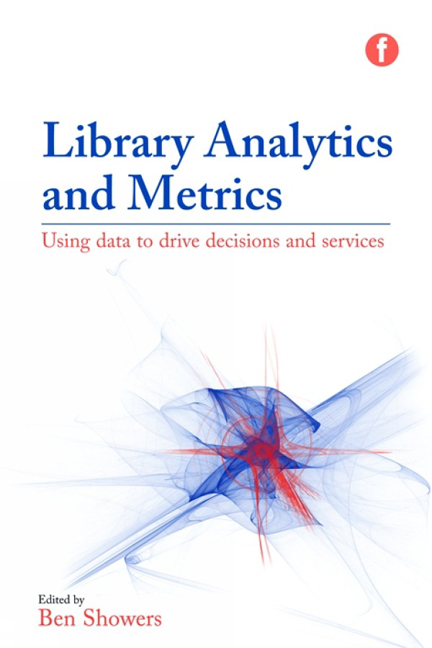Book contents
- Frontmatter
- Dedication
- Contents
- List of figures and tables
- Contributors
- Acknowledgements
- Introduction: getting the measure of analytics and metrics
- 1 Library data: big and small
- 2 Data-driven collections management
- 3 Using data to demonstrate library impact and value
- 4 Going beyond the numbers: using qualitative research to transform the library user's experience
- 5 Web and social media metrics for the cultural heritage sector
- 6 Understanding and managing the risks of analytics
- 7 Conclusion: towards a data-driven future?
- Index
5 - Web and social media metrics for the cultural heritage sector
Published online by Cambridge University Press: 09 June 2018
- Frontmatter
- Dedication
- Contents
- List of figures and tables
- Contributors
- Acknowledgements
- Introduction: getting the measure of analytics and metrics
- 1 Library data: big and small
- 2 Data-driven collections management
- 3 Using data to demonstrate library impact and value
- 4 Going beyond the numbers: using qualitative research to transform the library user's experience
- 5 Web and social media metrics for the cultural heritage sector
- 6 Understanding and managing the risks of analytics
- 7 Conclusion: towards a data-driven future?
- Index
Summary
Chapter overview
We have, until now, largely stayed within both the physical and virtual confines of the library, archive or institution as we have explored how analytics and metrics can improve services and help to support decision making. However, it is now time to step outside the boundaries of the institution and look at analytics and metrics in relation to the open web; in particular, to explore examples and approaches for cultural heritage institutions using web analytics and metrics to help drive and improve impact and user engagement on the web.
This chapter provides two case studies which present a picture of how some of the UK's biggest and most popular cultural heritage organizations (like the British Museum, British Library, Tate Gallery, V&A [Victoria and Albert Museum] and Wellcome Collection) take advantage of web metrics and analytics. The case studies provide unique insights, tips and examples of how institutions are utilizing web metrics to better understand their users’ behaviours, to improve their web and digital presences and to ensure maximum impact for what they are doing on the web. The two case studies in this chapter are:
• CASE STUDY 5.1 Stuart, D., The web impact of cultural heritage institutions, p. 117
• CASE STUDY 5.2 Malde, S. et al., Let's Get Real: a Journey Towards Understanding and Measuring Digital Engagement, p. 136.
Before we explore our case study examples it is worth dwelling on two new terms that this chapter has introduced – web metrics and social media metrics – and considering further why the web has become such a critical part of the work of the cultural heritage institution.
Web metrics and analytics in the cultural heritage sector
The Wikipedia entry for Web Analytics defines web metrics and analytics as ‘the measurement, collection, analysis and reporting of web data for purposes of understanding and optimizing web usage’. As libraries, archives, galleries and museums direct greater focus and resources to the development of their online presence, so it becomes increasingly critical to capture and analyse users’ online interactions and experiences. Like the institution's physical building, its web presence represents a vital part of an institution's existence.
- Type
- Chapter
- Information
- Library Analytics and MetricsUsing Data to Drive Decisions and Services, pp. 113 - 152Publisher: FacetPrint publication year: 2015



